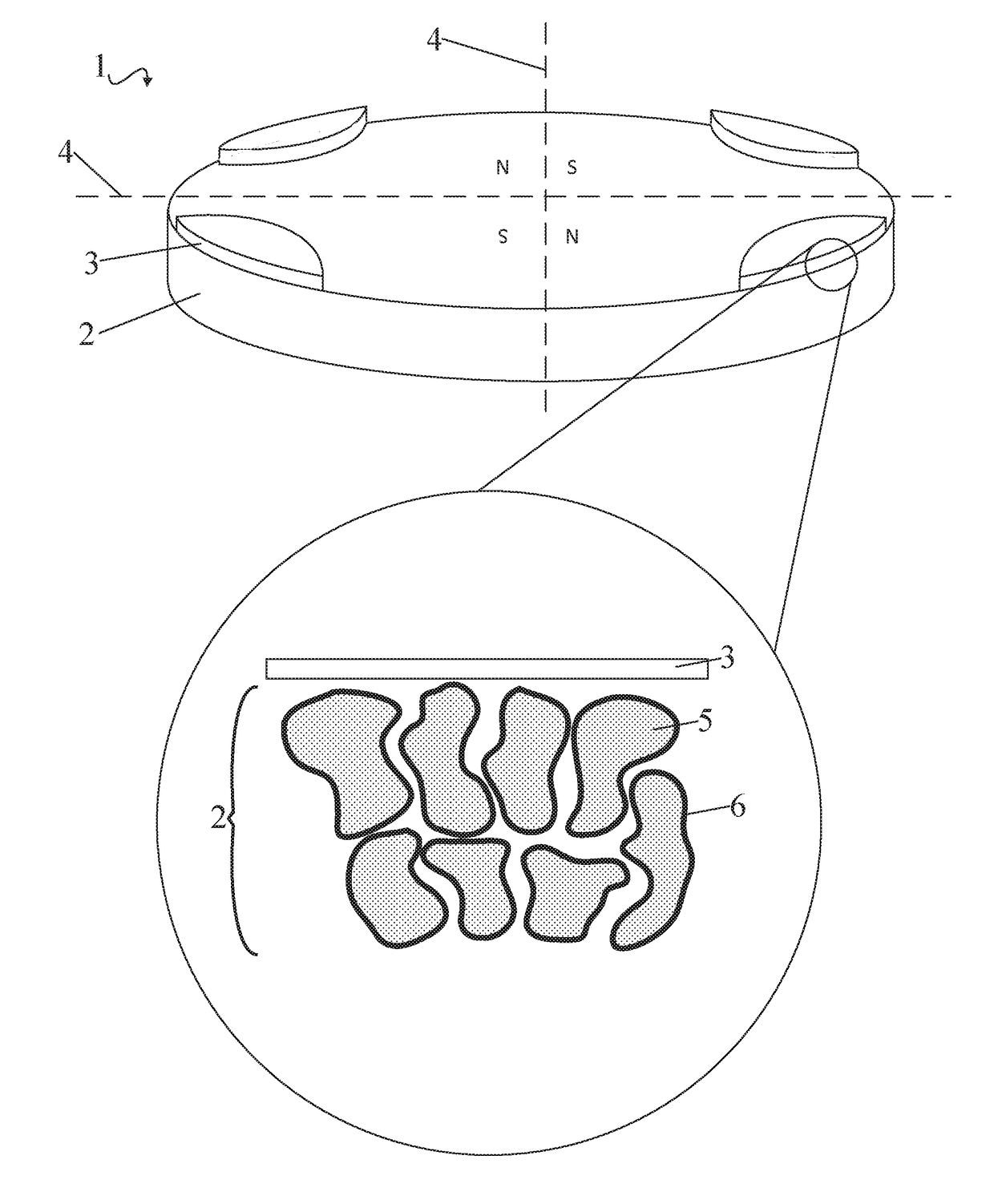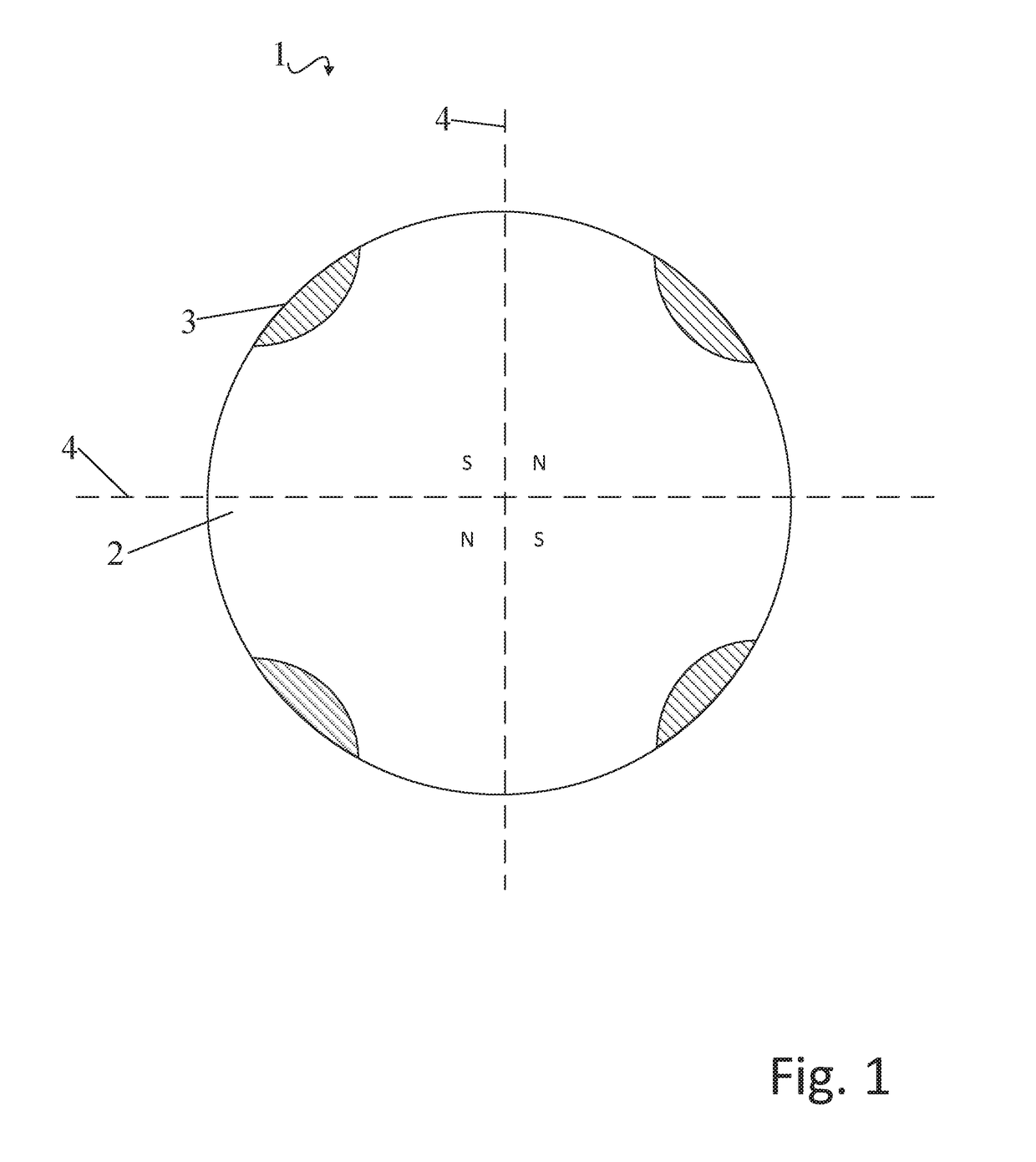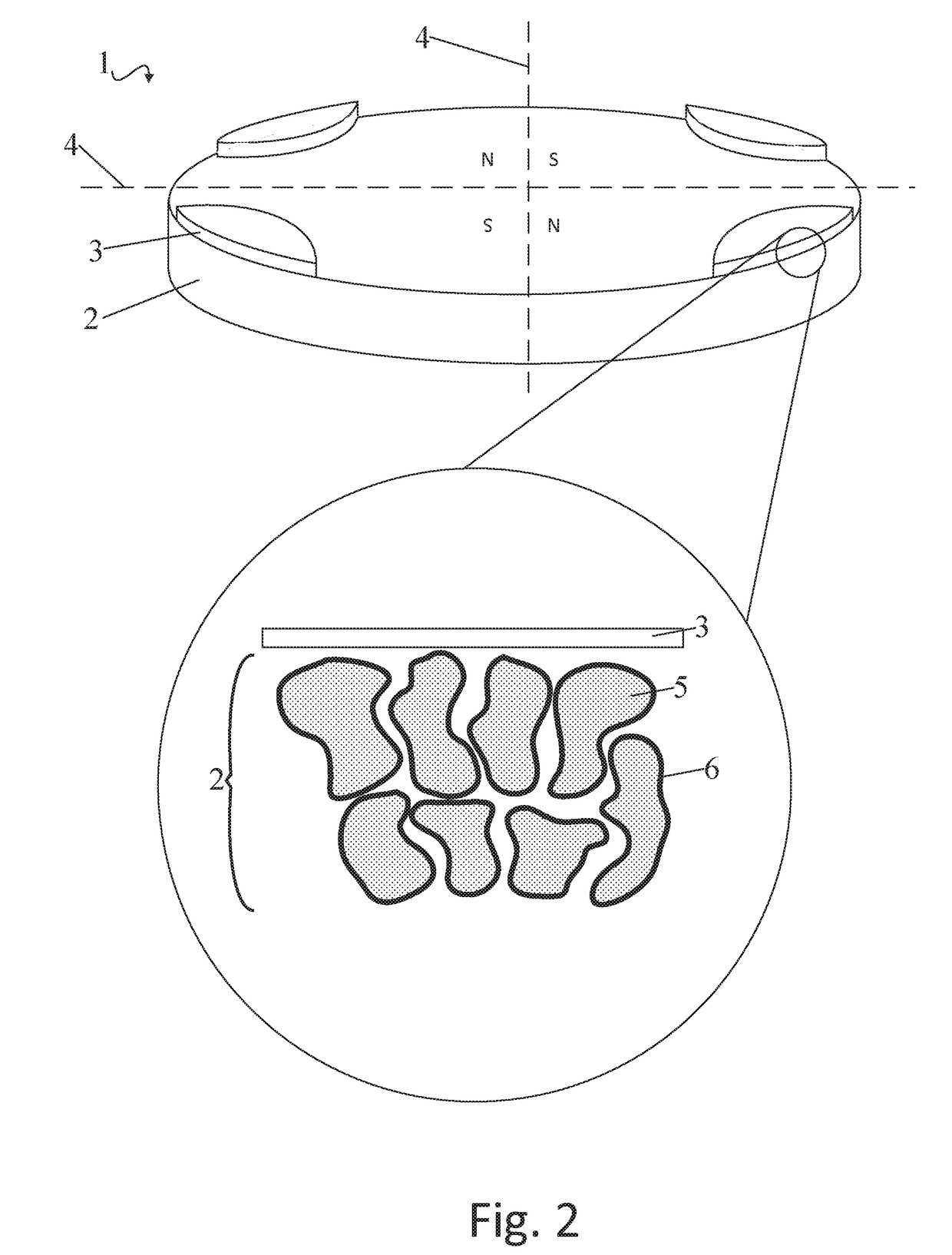Magnet
a rare earth magnet and magnet technology, applied in the field of magnets, can solve the problems of wasting expensive dysprosium or terbium, affecting requiring a considerable amount of time to deposit the material, so as to reduce the overall magnetic field strength of the magnet, improve the performance of the magnet, and increase coercivity
- Summary
- Abstract
- Description
- Claims
- Application Information
AI Technical Summary
Benefits of technology
Problems solved by technology
Method used
Image
Examples
Embodiment Construction
[0031]The magnet 1 of FIGS. 1, 2, and 3 comprises a cylindrically shaped magnetic body 2 and beads of dysprosium metal 3 deposited on a surface of the magnetic body 2. The magnet 1 is shown as having four poles, which are shown as being geometrically divided by pole intersections 4. Each pole of the magnet 1 has a region of high magnetic field density which is positioned in-between the pole intersection 4.
[0032]The magnetic body 2 comprises sintered grains 6 of a rare earth alloy. The grains 5 are shown as discrete granules with a boundary. Specifically, the bulk substance within the grains 5 comprises a Nd2Fe14B alloy. The grains 5 adjacent the deposited bead each have a shell layer 7 around their boundary. The shell layer 6 comprises diffused dysprosium which has substituted into the crystal lattice structure of the rare earth alloy. Although dysprosium can diffuse into the bulk of the crystal structure within the grains 5, careful control of the heat treatment conditions allow fo...
PUM
| Property | Measurement | Unit |
|---|---|---|
| temperature | aaaaa | aaaaa |
| temperature | aaaaa | aaaaa |
| thickness | aaaaa | aaaaa |
Abstract
Description
Claims
Application Information
 Login to View More
Login to View More - R&D
- Intellectual Property
- Life Sciences
- Materials
- Tech Scout
- Unparalleled Data Quality
- Higher Quality Content
- 60% Fewer Hallucinations
Browse by: Latest US Patents, China's latest patents, Technical Efficacy Thesaurus, Application Domain, Technology Topic, Popular Technical Reports.
© 2025 PatSnap. All rights reserved.Legal|Privacy policy|Modern Slavery Act Transparency Statement|Sitemap|About US| Contact US: help@patsnap.com



